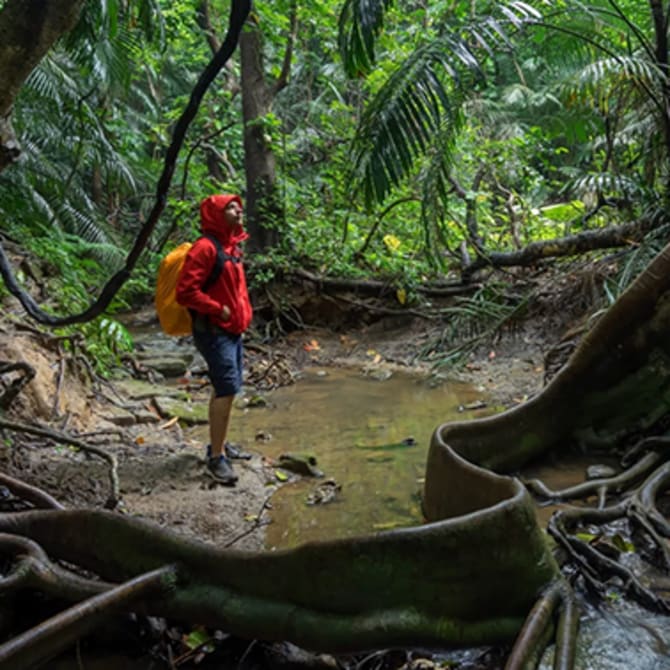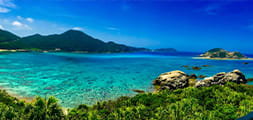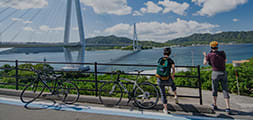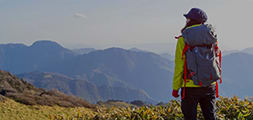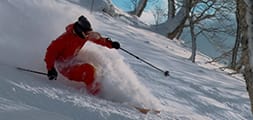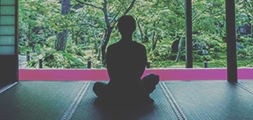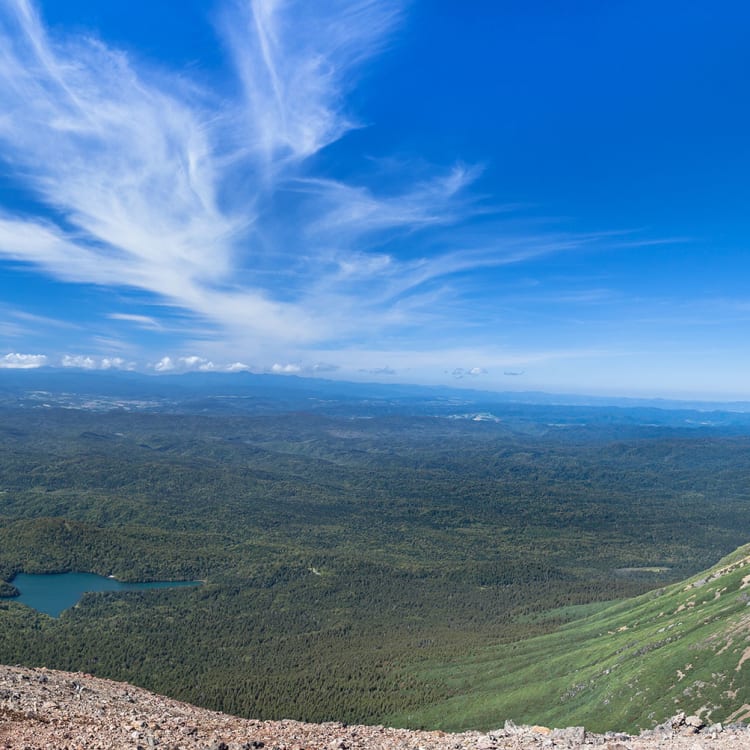
Interview Talking to Dr. Mark Brazil about Hokkaido and Adventure Travel in Japan Dr. Mark Brazil
Dr. Mark Brazil

The only foreign national residing in Japan to be appointed to the advisory board certified by ATTA headquarters. Has extensive experience in the participation of Japanese adventure travel business ventures. Born in England and has lived in Hokkaido since 1998. An ornithologist, natural historian, author, nature guide and Hokkaido Adventure Travel Association consultant. Since the 1980s, has written for newspapers and magazines, appeared on television and radio, given lectures and written several books, including "Japan: The Natural History of an Asian Archipelago," published in 2022. As a nature and ornithological specialist, has helped with the promotional activities of Japan, particularly Hokkaido , for international companies and has conducted tours as a guide for Western visitors to watch wild birds, mammals and other wildlife. In recent years, has been prolific in wide-ranging endeavors as a speaker specializing in nature tourism and adventure tours.
Q1 : You have been involved in adventure travel in Japan for over 40 years. Hokkaido, where you are currently based, is a leader in adventure travel within Japan and the host of ATWS 2021/2023. What made you decide to move to Hokkaido?
First of all, for me, Hokkaido is attractive because it is a manageable size—it’s similar in size to Iceland or Ireland. It has few major cities and a low human population. So, the feeling in Hokkaido is being closer to natural and wild places than most other parts of Japan. In 1997, when I was living in New Zealand, I was offered a university professorship in Hokkaido , and I accepted that position because I already knew about Hokkaido . I was already attracted because I love the outdoors. The opportunities for a diverse range of outdoor recreation activities are very, very great. So, lots of reasons!
When I was a postgraduate student studying for my Ph.D., I did research on Whooper Swans. An international conference on swans was held in Sapporo in February 1980, and that gave me my first opportunity to visit Japan. I traveled across Hokkaido and also down into Tohoku . It was my first introduction to Asia, to winter in Japan and to wildlife and outdoors in Hokkaido .

When Whooper Swans curl up to sleep, they tuck their heads into their feathers to conserve warmth.
I grew up in England, where if we have one centimeter of snow, it's a big problem. But in Hokkaido , there's lots of snow, making the landscape extremely beautiful. The temperature is much colder than in Britain, but it is a dry cold, so winter here has a very nice feeling. So, actually, my favorite season in Japan is winter.

A pair of Red Foxes courting on Notsuke Peninsula.
Q2 : From the perspective of your specialization in wildlife-related activities, what do you think is the appeal of adventure travel in Japan?
In terms of wildlife-related activities, the easiest activity for anyone is watching wildlife : animals and birds, or photographing them, or being out in wild areas and meeting them. Those are the key activities that involve wildlife. The reason that not only Hokkaido , but Japan as a whole, is of interest, from a wildlife point of view, is because some of the animals and birds that live here don't live anywhere else. You can't see them in other countries. Also, Japan has a very efficient infrastructure, so it is easy to travel. It is a very safe country. Japanese culture is very distinctive and different from many other parts of the world. So, the combination of wildlife-related activities plus the infrastructure, the culture, the food, the safety—all of these things together make Japan a very interesting destination.

Japanese Macaques eat a wide range of forest fruits and berries as well as leaves and buds. Here one is feeding on fruit of the Mayumi shrub.

Japanese Serow typically wander through montane forest searching for food. I was amazed to find this individual standing calmly in a river beside a waterfall.
I have so many memories of encountering wildlife. For example, the first time I met a brown bear was when I was hiking in Hokkaido —that was very exciting! And in Honshu, going out with a researcher at night, using chest waders to walk up a fast-flowing river and finding a Japanese Giant Salamander nearly a meter long is an incredibly strong memory. But I also have lots of local memories. I live in Teshikaga in East Hokkaido , and when I go walking around the area where I live, sometimes I hear swans calling as they fly over. I feel, “Ah, it's migration season!” It's a wonderful experience, feeling the season through wildlife. Meeting humpback whales off the Kerama Islands, fin whales off Abashiri and orcas off Shiretoko have all been fantastic experiences—Japan offers so many beautiful moments. I have too many memories; some of tiny events, and some of spectacular events.

Humpback Whales migrate to the Kerama Islands off Okinawa, spending the winter there in the warm, subtropical water.
Q3 : You have taken numerous photos of nature and wildlife in Japan. If you were to pick one favorite photo, what would it be? What is the story behind it?
Every year, many photographers come to Japan in winter to photograph Steller’s Sea Eagles. They want to photograph the eagles on the sea ice . But some years there is no sea ice or it flows away from the shore, and that picture is not possible. One day, I was out in a boat from Rausu in the Shiretoko Peninsula . There was no sea ice, so the photographers were very disappointed. But I said, “We have a great chance today because the wind is strong.” I knew that because of the wind, the eagles were all flying in the same direction. We took the boat close to the harbor wall, and the wind was perfect for the eagles to fly straight towards us. Usually, when you go out to the sea ice, the eagles are flying in all directions and are unpredictable and very hard to photograph. But on that day, the situation was such that the eagles flew straight towards us! I remember taking pictures of that eagle on many different occasions, but that day was the most exciting.

Steller’s Sea Eagles migrate to Hokkaido from Russia. They spend the winter along the coast, at lakes and along rivers hunting for fish. Here one takes off from the ice near Rausu, Shiretoko.
I don't think of myself as a photographer. I've had many photographs published and used many of them in my books, but in Japan, there are so many fantastic photographers. And when I see wildlife, my first reaction is to lift my binoculars to watch. Then, later on, I think, “Oh, my camera! I must take a picture.” But that day, photographing the sea eagles near Rausu was the strongest memory. And it was also a very good reminder that the weather, the wind and the sea ice conditions change.

An adult Steller’s Sea Eagle is calling on the coast near Rausu, with the island of Kunashiri in the background.

The sea ice drifting around the harbor in Utoro, Hokkaido
Q4 : Moving forward, what do you think needs to be done in the context of adventure travel in Japan in order for us to work toward achieving the SDGs and sustainable, low-impact tourist experiences?
Well, there is an interesting conflict here in the whole idea of sustainable travel: “Is it really sustainable or not?” However, if we look at reducing our impact, or aiming for a low-impact touristic experience, what we need to do is to encourage visitors to stay in fewer areas, not just rush around from area to area. Also, we need to place the emphasis on low-impact, self-powered activities: walking, hiking , cycling and canoeing . Anything that is self-powered. To support that, we really need to promote local regions developing long-distance walking trails, hiking trails and cycling routes. And we need to encourage different communities and different regions to work together so that guests can move from one area to another area in an easily connected way. That's another reason why I think Hokkaido has a lot to offer. It's possible to tour around the whole of Hokkaido by bicycle. There are lots of opportunities for hiking and walking . But a little more infrastructure development promoted by local cities and communities would be very helpful.

Short-tailed Shearwaters breed on islands off Australia and New Zealand and migrate to the Bering Sea for the northern summer. On the way they pass Japan and can be found gathering on the sea—here on the Sea of Okhotsk off Abashiri
Q5 : Do you have any recommendations for regions or activities for tourists who are visiting Japan in the future?
There are too many! Because I live in Hokkaido , I am very biased about Hokkaido , and of course, it offers tremendous activities. But I think, until recently when foreign visitors visit Japan, they think of visiting all of Japan or mainland Japan. But I would really recommend people to choose a different island. I would recommend that they spend their holiday in Shikoku or Kyushu . That’s because if you want to see temples, to find restaurants or to go hiking , it doesn't matter where you are in Japan. You can have those cultural and historical experiences. You can experience art and nature. And you can avoid all of the big crowds and go to very different local areas. For example, you could spend 10 days easily just touring around the southern half of Kyushu . You don't need to see the whole country. By looking small and closer, you can find all of the elements of Japan in one small area.
But if people who are interested in nature ask me where to go outside Hokkaido , I would say go to Amami Oshima . It's a fantastic island with lots of diversity. You can do lots of marine activities: sea kayaking and paddle boarding . You can do fishing and bird watching . Lots of activities in a very nice environment.

At night many fascinating creatures emerge on Amami Oshima. The endemic Amami Woodcock feeds on invertebrates such as earthworms, which it finds by probing into soft soil.
A lot of my guests come in winter. And then, having experienced winter, they want to come back in a different season. Japan has that great advantage that visitors always want to see more.

Mangrove forests on Amami Oshima Island

During migration tens of thousands of geese pass through Hokkaido. Each evening they gather in huge groups to roost in safety on inland lakes or coastal lagoons. Here a flock of Greater White-fronted Geese is gathering at sunset on Miyajima-numa near Bibai.




























































